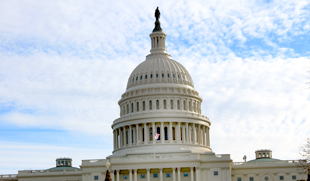 Accountable care organizations (ACOs) are the talk of town at the moment, but the current proposed rule for ACOs offers little incentive for small to medium-sized physician practices to participate, according to one industry insider.
Accountable care organizations (ACOs) are the talk of town at the moment, but the current proposed rule for ACOs offers little incentive for small to medium-sized physician practices to participate, according to one industry insider.
"Only those groups that truly have the money and resources are going to play," says this source, who works as a regulatory analyst and lobbyist at a major physician advocacy group in Washington. "As the rule is set up now, it's a very tough sell for smaller groups ... and a lot of care in this country is provided by small practices, five providers or less."
This source was speaking to me anonymously because he didn't want his rather negative view on the ACO proposed rule to be associated with the official position of the advocacy group he works for -- though for the record, his employer wasn't entirely sanguine on the rule either, in its current form.
"I think the impact is going to be less than people thought it was going to be," he says. "The way it's set up, the larger group practices and hospitals, those who already have the infrastructure, will be able to do it. I think it's going to be very difficult for small groups to participate, particularly beacuse there's no 'no-risk' option."
When he says "no-risk," he's talking about a way for a practice to be part of an ACO, but not be on the hook should the ACO wind up costing Medicare more than the program would've paid to treat the same population of patients in a given year. The closest the proposed rule gets to "no-risk" is an option for ACOs to share only in savings for the first two years of the program, but be held responsible for excess expenditures during the third year. A second option would have ACOs sharing the risk all three years, but be given 60% of the savings instead of 50% under the first option.
Still, the ACO concept makes sense in theory, the source says. "If you can get the small practices to organize and decrease hospitalizations, if you can pick out high-cost patients and get them hooked up with case managers, and you add to that good case management, you can save big money," he admits. "But the infrastructure you need to do this is not minimalist."
Here's his overall list of major obstacles in the ACO proposed rule that would hamper physician practice participation:
-
Every option exposes practices to some risk
-
There is no federal subsidy to help offset the startup costs of an ACO, which include ensuring that 50% of participating providers have EHR capability
-
The financial upside is limited to 50% of any savings that are produced, and 60% at best, and that comes with three times the risk
-
Major reporting burden for the quality measures that ACOs must meet
-
Significant compliance and legal issues to navigate
-
No help with ACO governance structure and payment distribution structure; it's up to ACO members to decide all this and negotiate amongst themselve show to split any potential savings
The conclusion? The ACO proposed rule would have small practices spend a large amount of time, energy and effectively money to join an experimental project, one which may or may not result in savings, of which they would only be entitled to 50% or 60% of, and then for any one practice, only a fraction of that 50% savings.
The risk is even greater for small practices who don't perform well in their ACO; they risk being given a very small share of whatever savings are produced, because no ACO governing body is likely to dole out rewards blindly, the source says. They will want to split the reward based on how much ACO members contributed, he observes.